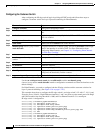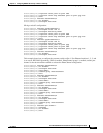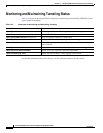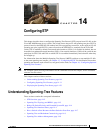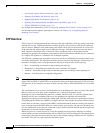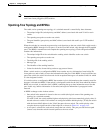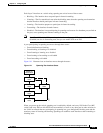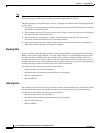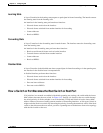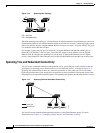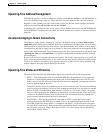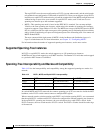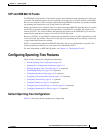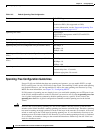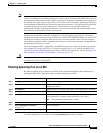
14-6
Cisco ME 3400 Ethernet Access Switch Software Configuration Guide
OL-9639-06
Chapter 14 Configuring STP
Understanding Spanning-Tree Features
Note UNIs are shut down by default, and when they are brought up, they immediately start forwarding traffic.
ENIs act the same as UNIs unless you have specifically enabled STP on the port.
When the spanning-tree algorithm places a Layer 2 spanning-tree interface in the forwarding state, this
process occurs:
1. The interface is in the listening state while spanning tree waits for protocol information to transition
the interface to the blocking state.
2. While spanning tree waits the forward-delay timer to expire, it moves the interface to the learning
state and resets the forward-delay timer.
3. In the learning state, the interface continues to block frame forwarding as the switch learns
end-station location information for the forwarding database.
4. When the forward-delay timer expires, spanning tree moves the interface to the forwarding state,
where both learning and frame forwarding are enabled.
Blocking State
A Layer 2 interface in the blocking state does not participate in frame forwarding. After initialization, a
BPDU is sent to each switch interface, or to each switch STP port. A switch initially functions as the
root until it exchanges BPDUs with other switches. This exchange establishes which switch in the
network is the root or root switch. If there is only one switch in the network, no exchange occurs, the
forward-delay timer expires, and the interface moves to the listening state. An interface participating in
spanning tree always enters the blocking state after switch initialization.
An interface in the blocking state performs these functions:
• Discards frames received on the interface
• Discards frames switched from another interface for forwarding
• Does not learn addresses
• Receives BPDUs
Listening State
The listening state is the first state a Layer 2 interface enters after the blocking state. The interface enters
this state when the spanning tree decides that the interface should participate in frame forwarding.
An interface in the listening state performs these functions:
• Discards frames received on the interface
• Discards frames switched from another interface for forwarding
• Does not learn addresses
• Receives BPDUs



